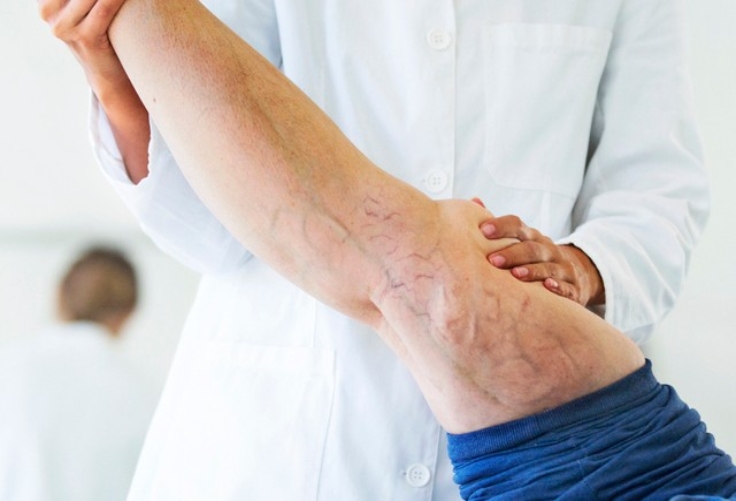Spider elbow, also known as tennis elbow or lateral epicondylitis, is a common condition that affects the outer part of the elbow. It is characterized by pain and tenderness in the area where the forearm muscles attach to the bony bump on the outer side of the elbow. In this article, we will explore the causes, symptoms, and treatment options for spider elbow.
What is Spider Elbow?
Spider elbow, or lateral epicondylitis, is a condition characterized by the inflammation of the tendons on the outer part of the elbow. The tendons affected are responsible for connecting the forearm muscles to the lateral epicondyle, a bony bump on the outer side of the elbow. This condition commonly occurs due to repetitive motions and overuse of the forearm muscles.
Causes of Spider Elbow
Spider elbow is often caused by repetitive activities that strain the forearm muscles. Some common causes include:
- Overuse of the forearm muscles in activities such as tennis, golf, and painting.
- Improper technique or equipment use during sports or physical activities.
- Engaging in repetitive motions without proper rest or conditioning.
- Age-related degeneration of the tendons.
Symptoms of Spider Elbow
The symptoms of spider elbow may develop gradually over time. Common signs and symptoms include:
- Pain or burning sensation on the outer side of the elbow.
- Weak grip strength.
- Difficulty in performing everyday activities such as gripping objects, shaking hands, or turning a doorknob.
- Tenderness when pressure is applied to the affected area.
Diagnosing Spider Elbow
To diagnose spider elbow, a healthcare professional will typically perform a physical examination and review the patient’s medical history. They may also use imaging tests such as X-rays or MRI scans to rule out other conditions and assess the extent of the injury.
Treatment Options
Non-Surgical Treatments
In most cases, spider elbow can be effectively treated with non-surgical methods. These may include:
- Rest and activity modification: Avoiding activities that worsen the symptoms and giving the elbow proper rest.
- Ice therapy: Applying ice packs to the affected area to reduce inflammation and pain.
- Physical therapy: Engaging in specific exercises to strengthen the forearm muscles and improve flexibility.
- Pain medications: Over-the-counter pain relievers or prescribed medications to alleviate pain and reduce inflammation.
Surgical Interventions
If non-surgical treatments fail to provide relief, surgical intervention may be considered. Surgical options for spider elbow include:
- Open surgery: A procedure where the surgeon removes the damaged tendon tissue and repairs any tears.
- Arthroscopic surgery: A minimally invasive procedure where a small camera and surgical instruments are inserted through small incisions to remove or repair damaged tissue.
Rehabilitation and Recovery
Following surgical or non-surgical treatment, rehabilitation plays a crucial role in the recovery process. A physical therapist can design a customized rehabilitation program that includes exercises to gradually strengthen the forearm muscles and restore flexibility. This process helps improve the overall function of the elbow and prevent future injuries.
Preventing Spider Elbow
To prevent spider elbow or reduce the risk of recurrence, consider the following preventive measures:
- Maintain proper form and technique during physical activities.
- Warm up before engaging in intense physical activities.
- Use appropriate equipment and gear.
- Take regular breaks during repetitive tasks to allow the muscles to rest.
- Engage in exercises to strengthen the forearm muscles and improve flexibility.
When to See a Doctor
If you experience persistent pain and discomfort in your elbow, it is advisable to consult a healthcare professional. They can provide an accurate diagnosis, recommend appropriate treatment options, and guide you on managing the condition effectively.
Wrapping It Up
Spider elbow, or lateral epicondylitis, is a condition that causes pain and discomfort in the outer part of the elbow. It commonly occurs due to repetitive motions and overuse of the forearm muscles. Fortunately, with proper diagnosis and treatment, most cases of spider elbow can be effectively managed. Non-surgical treatments like rest, ice therapy, physical therapy, and pain medications are often successful. However, in severe cases, surgical interventions may be required. By following preventive measures and seeking timely medical attention, individuals can reduce the risk of developing or recurring spider elbow.
Read More:What are Spiritual Smells, and How do They Differ From Ordinary Scents?




[…] Read More: What are The Recommended Treatment Options For Spider Elbow? […]
daxktilogibigibi.wGQm3OfO06nD
yandanxvurulmus.9ADdoI7BKdJV
imagery xyandanxvurulmus.MW5IUeSi3kFS
tadalafil 40 mg with dapoxetine 60 mg
tadalafil 40 mg with dapoxetine 60 mg